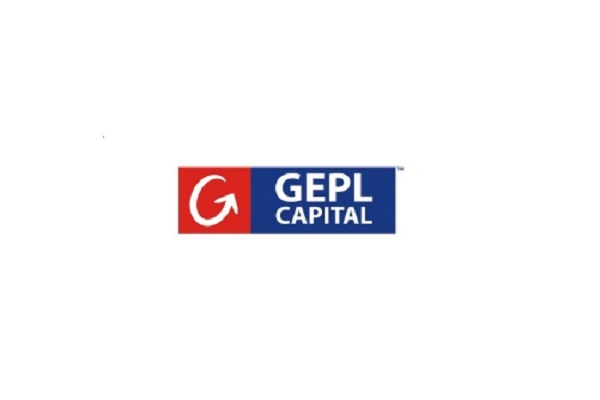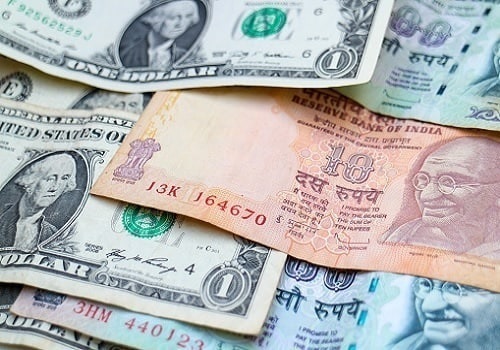Aluminium trading range for the day is 203.6-208.6 - Kedia Advisory

Gold
Gold saw a significant 1.23% increase, closing at 57572, driven by the unexpected Hamas attack on Israel. This geopolitical shock has rattled traders and investors, sparking safe-haven demand for gold. Interestingly, this rally persisted despite a stronger-than-expected US jobs report, which usually raises concerns about rising interest rates. Higher interest rates typically make gold less appealing because it doesn't offer interest, but the geopolitical turmoil seems to outweigh this concern for now. Furthermore, physical gold demand in select Asian markets improved as lower prices attracted buyers. In India, premiums reached a 17-month high as jewelers geared up for the festival season, allowing them to charge up to $5 an ounce over official domestic prices. Meanwhile, gold premiums in China eased after reaching record highs in September due to limited gold import quotas. Although China slightly increased its gold reserves in September, the overall value of these reserves dipped. From a technical perspective, the gold market is experiencing short covering, with a drop in open interest by -4.66% to settle at 15215, while prices rose by 701 rupees. Key support stands at 57185, with potential downside to 56790. Resistance is currently at 57790, and breaking through could push prices to test 58000.
Trading Ideas:
* Gold trading range for the day is 56790-58000.
* Gold rallies on safe-haven demand amid Middle East crisis
* Prices also gained even as a stronger-than-expected US jobs report fanned rate concerns.
* Physical gold demand improved in some Asian hubs as a dip in prices attracted buyers, with premiums in India hitting a 17-month high
Silver
Silver showed a significant gain of 1.36%, closing at 69094, driven by the ongoing Israel-Hamas conflict, which escalated geopolitical risks in the Middle East. The surprise attack by Hamas on Israel, along with retaliation from both sides, raised concerns of a wider conflict, potentially involving Iran. Additionally, strong US jobs data heightened expectations of another Fed interest rate hike this year, causing investors to turn to fixed income assets and denting silver's appeal. However, silver found support from hopes of an economic recovery in China, a tight supply situation, and the increasing use of silver in technologies like solar panels, which require high conductivity. Unlike gold, silver is not only an investment asset but also a critical component in various industries, including jewelry, electronics, electric vehicles, and solar panels. This diverse demand has led to a supply deficit in the silver market, with production unable to keep up with demand. In 2022, the silver market experienced a deficit of 237.7 million ounces, according to the Silver Institute, and deficits are expected to continue in the coming years. From a technical standpoint, silver is undergoing short covering, with a drop in open interest by -0.86% to settle at 26091, while prices gained 924 rupees. Key support levels are at 68680, with potential downside to 68265. Resistance is currently at 69355, and breaking through could push prices to test 69615.
Trading Ideas:
* Silver trading range for the day is 68265-69615.
* Silver rose as the Israel-Hamas conflict extended into a third day, raising geopolitical risks in the Middle East.
* Investors were also wary of a wider conflict amid allegations of Iranian involvement in the attacks.
* Support also seen amid hopes for an economic recovery in China, tight supply
Crude oil
Crude oil experienced a substantial 4.49% surge, closing at 7184, driven by escalating concerns over potential disruptions to global oil supplies in the midst of the Middle East conflict. OPEC, in its 2023 World Oil Outlook, raised its oil demand forecasts for the medium and long term, estimating a need for $14 trillion in investment to meet this demand, despite the growth of renewable fuels and electric vehicles. This outlook contrasts with some other forecasts, such as the International Energy Agency's, which suggest oil demand could peak in this decade. OPEC acknowledged recent developments that prompted a reevaluation of energy potential. The organization also increased its demand forecasts for the medium term to 2028, citing strong demand despite economic challenges like interest rate hikes. In 2028, OPEC predicts world oil demand will reach 110.2 million barrels per day (bpd), up from 102 million bpd in 2023. The forecast for 2027 estimates oil use at 109 million bpd, up from 106.9 million bpd in 2022. From a technical perspective, crude oil is witnessing short covering, marked by a 25.14% drop in open interest to settle at 8896. Prices surged by 309 rupees. Key support is at 7075, with potential downside to 6966, while resistance stands at 7265, and a breakthrough could lead to testing 7346.
Trading Ideas:
* Crudeoil trading range for the day is 6966-7346.
* Crude oil rises due to Middle East conflict, global supply worries
* OPEC raises oil demand view in long – term outlook
* OPEC also raised its demand forecasts for the medium term to 2028, citing robust demand this year
Natural gas
Natural gas saw a robust 1.96% increase, settling at 281.3, fueled by rising exports and forecasts of cooler weather, which is expected to drive higher heating demand next week. This revised weather outlook added to the bullish sentiment. Moreover, global energy supply concerns, driven by Middle East tensions and potential worker strikes at liquefied natural gas (LNG) export facilities in Australia, supported gas prices worldwide. In Australia, Chevron sought government assistance to resolve issues with unions at its LNG facilities, potentially affecting LNG exports. Australia, a major LNG exporter, plays a crucial role in global gas prices. Any disruptions in Australian LNG exports could cause global gas prices, including in the U.S., to rise. In the U.S., natural gas output in the lower 48 states inched up in October, with forecasts indicating increased demand, including exports, as cooler weather sets in. LSEG projected U.S. gas demand to rise from 95.2 billion cubic feet per day (bcfd) this week to 97.0 bcfd next week. Additionally, pipeline exports to Mexico remained near record highs. From a technical perspective, natural gas is experiencing short covering, marked by a 19.23% drop in open interest to settle at 20841, while prices gained 5.4 rupees. Key support levels stand at 276.2, with potential downside to 271.1. Resistance is currently at 287.7, and a breakthrough could lead to testing 294.1.
Trading Ideas:
* Naturalgas trading range for the day is 271.1-294.1.
* Natural gas edged up on rising exports and forecasts for cooler weather and higher heating demand.
* Prices were also supported by worries about global energy supplies that boosted oil and gas prices around the world.
* Support also seen amid possible strikes by workers at liquefied natural gas (LNG) export plants in Australia.
Copper
Copper marked a 0.78% gain, closing at 711.4, as markets reevaluated the impact of surging bond yields on industrial input demand. Optimistic PMI data from both the U.S. and China showcased the resilience of manufacturers amid tighter monetary policies, sustaining demand prospects despite rising long-dated bond yields. Additionally, expectations of substantial infrastructure construction in China, as predicted by JPMorgan, boosted industrial activity. Concerns about potential shortages in the future also contributed to price support. Reports from S&P Global and the EIA projected a doubling of copper demand by 2035, surpassing the International Copper Association's supply forecast by 26%, raising concerns of significant shortfalls. In the shorter term, Chile's Codelco, the world's largest copper miner, reported a 14% decline in output in the first half of the year, extending a 7% drop from 2022. Codelco is offering copper at a $234 per metric ton premium to European customers for the coming year, unchanged from 2023. Japan's refined copper production is expected to remain steady in the second half of fiscal 2024. According to the International Copper Study Group (ICSG), the global copper market is anticipated to witness a deficit of 27,000 metric tons this year and a surplus of 467,000 tons in 2024. From a technical perspective, copper is undergoing short covering, marked by a 5.44% drop in open interest to settle at 6766, while prices gained 5.5 rupees. Key support levels are at 707.5, with potential downside to 703.6. Resistance stands at 714.8, and a breakthrough could lead to testing 718.2.
Trading Ideas:
* Copper trading range for the day is 703.6-718.2.
* Copper rose as markets reassessed the impact of soaring bond yields on the demand for industrial inputs.
* Optimistic PMI data from the US underscored the robustness of manufacturers to tighter monetary policy
* Output from Codelco sank by 14% in the first half of the year, stretching the 7% decline from 2022
Zinc
Zinc registered a modest 0.27% gain, closing at 223.45, driven by short covering following concerns about potential interest rate hikes by the U.S. Federal Reserve, which had initially dampened sentiment. However, the market rebounded as traders covered their short positions. The International Lead and Zinc Study Group (ILZSG) indicated that global refined zinc markets are likely to experience surpluses in 2023 and 2024. Zinc is expected to have a surplus of 248,000 tons in 2023 and a larger surplus of 367,000 tons in 2024. Despite this, global demand for refined zinc is anticipated to increase by 1.1% to 13.59 million tons in 2023 and further rise by 2.5% to 13.93 million tons in 2024. The ILZSG also forecasts a substantial rise in global refined zinc metal production, driven mainly by China, with a 3.7% increase to 13.84 million tons in 2023 and a 3.3% rise to 14.30 million tons in 2024. Meanwhile, China's central bank, the People's Bank of China (PBOC), is focused on preventing currency overshooting risks and maintaining the yuan at reasonable and balanced levels. The PBOC left its loan prime rates unchanged in September to stabilize the country's economy. Investors are awaiting Chinese inflation and trade data for further insights. From a technical perspective, zinc is experiencing fresh buying, marked by a 1.22% increase in open interest to settle at 3315, with prices rising by 0.6 rupees. Key support is at 222, with potential downside to 220.4, while resistance stands at 225.3, and a breakthrough could lead to testing 227.
Trading Ideas:
* Zinc trading range for the day is 220.4-227.
* Zinc recovers on short covering after pressure seen as worries over more interest rate hikes by Fed weighed.
* Global refined zinc markets are likely to see surpluses in both 2023 and 2024
* Zinc is expected to see a surplus of 248,000 tons in 2023 and a surplus of 367,000 tons in 2024.
Zinc
Zinc posted a modest 0.36% gain, closing at 206.5, driven by short covering following concerns about a hawkish Federal Reserve's impact on the US dollar and industrial sentiment. However, supply concerns prevented a steeper decline. China, the world's largest aluminium producer, has curbed production expansion beyond the current 45 million-ton limit to prevent oversupply and increased energy consumption from outdated infrastructure. Indonesia's ban on bauxite exports, a key aluminium ore, further threatens supply. Recent data showed a 13% week-on-week reduction in deliverable stocks at the Shanghai Futures Exchange in late September. Despite China's property sector crisis, aluminium demand remains surprisingly robust, driven by orders from the home appliance, electric vehicle, solar, and wind sectors. US employment also increased significantly in September, potentially providing the Fed with a reason to raise interest rates again. Technically, aluminium experiences short covering, with a 2.78% drop in open interest to 3570, while prices rose by 0.75 rupees. Key support lies at 205, with potential downside to 203.6. Resistance is currently at 207.5, with a move above potentially testing 208.6.
Trading Ideas:
* Aluminium trading range for the day is 203.6-208.6.
* Aluminum gains recovers on short covering after pressure seen as the outlook of a hawkish Fed lifted the dollar.
* Demand for aluminium in China has been surprisingly robust despite the country's property sector crisis
* Data showed U.S. employment increased by the most in eight months in September as hiring rose broadly
Cotton
Cotton prices saw a modest increase of 0.23%, settling at 59980. This uptick is attributed to concerns within the cotton trade regarding the potential impact of a prolonged dry spell during August-September and damage caused by the pink bollworm in North India on the cotton yields and quality of the 2023-24 crop (October-September). The cotton acreage for the kharif season is down by 5%, with delayed sowing due to a late monsoon. A clearer picture of the 2023-24 crop is expected by the end of this month, and market watchers are keeping an eye on the selling pattern of raw cotton (kapas). Daily market arrivals are estimated at around 50,000-55,000 bales, encompassing both the old and new crop. Globally, the cotton industry is grappling with reductions in both production and consumption, as indicated in the 2023-24 Cotton outlook. The U.S. cotton projections for the same period include higher beginning stocks but lower production, exports, and ending stocks. India, on the other hand, is projected to produce between 330 lakh to 340 lakh bales (each 170 kg) of cotton in the 2023-2024 cotton season starting on October 1. In Rajkot, a significant spot market, cotton prices ended at 28413.75 Rupees, showing a gain of 0.51%. From a technical perspective, the cotton market is witnessing short covering, with a drop in open interest by -2.68% to 109. Prices have risen by 140 rupees. Key support levels to monitor are at 59880, with potential testing at 59790. On the upside, resistance is anticipated at 60080, and a breakthrough could lead to prices testing at 60190.
Trading Ideas:
* Cottoncandy trading range for the day is 59790-60190.
* Cotton gains as yield may suffer due to the dry spell and the threat of pink bollworm
* The cotton acreage this kharif is lower by 5 per cent and the sowing was delayed by 15-20 days on account of delayed monsoon.
* The daily market arrivals, are estimated at around 50,000-55,000 bales including both the old and new crop.
* In Rajkot, a major spot market, the price ended at 28413.75 Rupees gained by 0.51 percent.
Turmeric
Turmeric prices took a significant dip of 5.07%, settling at 14794, primarily due to profit booking following earlier price gains driven by concerns of potential yield losses in October due to unfavorable weather conditions. The India Meteorological Department (IMD) forecasts drier-than-average weather in October, which could impact crop growth. Despite this decline, buying activity remains at current levels, and decreasing supplies are expected to sustain price stability. Additionally, there is support for improved export opportunities, as turmeric exports have increased by 25% due to rising demand in both developed and emerging nations. Expectations of a 20-25% decline in turmeric seeding this year, particularly in regions like Maharashtra, Tamil Nadu, Andhra Pradesh, and Telangana, are a result of shifting priorities among farmers. Turmeric exports during April to July 2023 rose by 15.05%, totaling 71,616.77 tonnes compared to 62,245.73 tonnes in the same period of 2022. However, in July 2023, exports decreased by 24.60% compared to June 2023, with 13,841.47 tonnes shipped. Nevertheless, this represented an 8.05% increase compared to July 2022. In the major spot market of Nizamabad, prices concluded at 13911 Rupees, marking a 1.05% decrease. From a technical standpoint, the turmeric market is witnessing fresh selling pressure, with open interest increasing by 12.77% to 10,335. Prices have dropped by 790 rupees. Key support levels to watch are at 14512, with potential testing at 14232. On the upside, resistance is anticipated at 15260, and a breakthrough could lead to prices testing at 15728.
Trading Ideas:
* Turmeric trading range for the day is 14232-15728.
* Turmeric dropped on profit booking after prices rose due to expected October weather yield losses
* According to IMD, October is projected to be drier than average, which will have an impact on crop growth.
* Support is also evident for improved export opportunities.
* In Nizamabad, a major spot market, the price ended at 13911 Rupees dropped by -1.05 percent.
Jeera
The jeera market saw a 1% drop in prices to settle at 58995 due to profit booking, following recent gains driven by local supply shortages. Millers continue to buy on dips due to rising festive demand and limited high-quality crop availability. However, while Indian jeera remains competitively priced globally, this hasn't translated into increased exports, with China reducing its purchases. Uncertainty looms as China may buy Indian cumin in October-November before the new crop arrives. Additionally, drier weather in Gujarat is expected to increase arrivals, limiting upward price movements. In terms of supply and demand, forecasts indicate cumin demand surpassing supply this year, with exports showing a 7.99% decline from April to July compared to the same period in 2022. July 2023 witnessed a 20.30% drop in jeera exports compared to June 2023 and a significant 58.23% decrease compared to July 2022. From a technical perspective, the market is experiencing fresh selling, with a 6.97% increase in open interest to 3132, while prices have fallen by 595 rupees. Support for jeera is currently at 58740, with potential testing of 58480 levels, while resistance is expected at 59390, with the possibility of prices testing 59780.
Trading Ideas:
* Jeera trading range for the day is 58480-59780.
* Jeera dropped on profit booking after prices gained due to shrinking supplies
* Increased festive demand and limited availability of quality crops in the market is prompting miller to buy
* However, sluggish export demand is still a major concern for Indian traders
* In Unjha, a major spot market, the price ended at 59273.1 Rupees dropped by -0.44 percent.
Views express by all participants are for information & academic purpose only. Kindly read disclaimer before referring below views. Click Here For Disclaimer





















